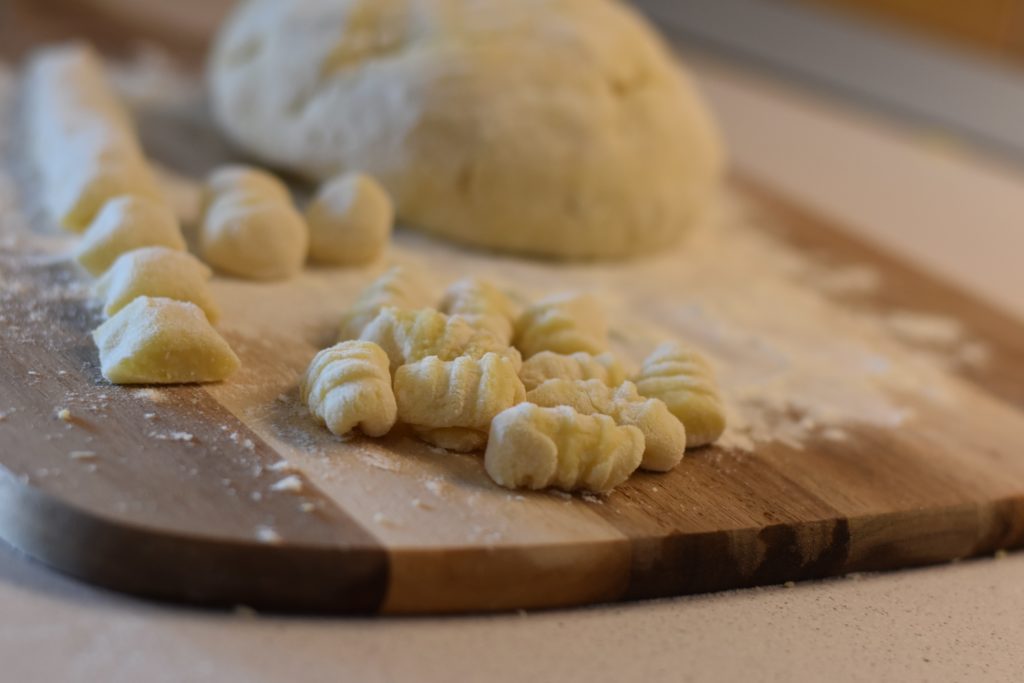I often refer to October as the month of the Saints. I would do well to do the same for November. Why? October is filled with some of our most well-known and inspiring Saints in the Roman liturgical calendar: Saint Francis of Assisi, St. Thérèse of Lisieux, St. Margaret Mary Alocoque, St. Ignatius of Antioch, St. Teresa of Ávila, and St. Pope John Paul II. But November brings the Solemnity of All Saints’ (November 1) and the Commemoration of All Souls’ (November 2), which celebrates all the saints in heaven and the faithfully departed.
Why do Catholics Celebrate Special Days?
One of the great fruits of the Second Vatican Council is the teachings the Church received in “Lumen Gentium,” which means the “light of the world.” A central take-a-way of this document is that no matter your vocation, you are called to a life of holiness (cf. Lumen Gentium, no. 39-42). This is the call of the Christian life; to become a saint, or in lay man’s terms, “to align your will with God’s will.” The stories of the Saints show us that it is possible to achieve this. This is why we must celebrate!
Believe it or not, every day in the life of the Church is a dedicated feast day. At the front and center of all feasts are those commemorating the earthly life of Christ. After all, he is the central figure of our faith. Other feast days relate to the Blessed Virgin Mary and the Saints. What a tremendous gift this is to us!
These are days that have been designated and celebrated throughout the past 2,000 years. Some are practically brand new; one of the newest Blesseds’ in the Church is Blessed Carlo Acutis. We will celebrate his second feast day on October 12, 2021, as we just celebrated his first feast day, two days after he was declared Blessed on October 10, 2020.
The purpose of all feast days is to help us understand and integrate the Christian life found in Christ, Mary, and the Saints’ lives. The Saints inspire us by their examples, and the Church teaches us to go to them to ask for their intercession on our behalf to God.
To help you better understand how the Church celebrates the feast days, here is a breakdown of the different “types” (solemnities, feasts, and memorials).
To be Catholic is to Celebrate and Enjoy Life with One Another
God made us for communion. Where do we best exercise this? At a table with food, where we can give thanks to God and for one other with each other. This prepares us for the true feast: the Holy Mass and ultimately Heaven!
Gathering with others to honor the things of God, share in fellowship, and have fun. This all orients us to the ways of God and why we were made. He wants us to talk about him, pray to him, pray for the faithfully departed, enjoy friends and family, and take in good food and drink. Because it’s all a foretaste for what is to come. And when we celebrate with one another (the proper context for celebrating), we grow in health and well-being. (Something we are missing so badly in these days of COVID-19.)
As you make a point to celebrate All Saints’ and All Souls’, consider learning about a new Saint this month. Or, make a point to pray for the dead from November 1-8 to obtain a plenary indulgence. Go ahead, celebrate the gift God has given the Church through the Saints by really celebrating. This might include enjoying a new appetizer and drink pairing with a friend, boyfriend, sibling, husband, or parent! To make it even sweeter, enjoy the pairing after participating in the Mass or Evening Prayer. If you are looking for accompaniment in prayer, the Hallow prayer app offers several options. Get a 30-day free trial to Hallow Plus.
There are many tips and suggestions out there for Catholic families looking to teach their little ones about the lives of the Saints. It’s wonderful. But let’s not forget about the single and newly married millennials. Do you happen to be one? While you might not be the crafty type (or if you are, go for it, make that crosier out of foil, or drawing of the Sacred Heart!), I know you can cook up one of these hors d’oeuvres or dishes and buy the perfect bottle of wine to pair it with, as you google a Saint’s name or watch a YouTube video on his or her life.
Four Pairings to Celebrate like a Catholic
1. Gnocchi with Gorgonzola and Pear + Chardonnay

This is, hands-down, my favorite celebratory meal. It is for the most important occasions. The first time I experienced a bite of this heaven-on-earth, it was on the pilgrimage where I acknowledged the importance of renewing my baptismal promises: something I do every Solemnity of All Saints’ (my baptism anniversary). Shop Cooking with the Saints.
Will this be the occasion you choose to cook up this traditional Italian gnocchi recipe and pour a rich white wine, such as a Chardonnay (A non-alcoholic Chardonnay will work, too!)?
Get the recipe.
2. French Charcuterie Board + Pinot Noir
Raise your hand if you love Charcuterie! If I could, I would eat charcuterie style for every meal. It provides all sorts of options. It has all the tastes and therefore really is the absolute best setup for an evening of noshing. After all, the board itself just invites family and friends to the table.
As you prepare your French board, you’ll discover the must-have is pork. And the best wine to accompany pork is Pinot Noir.
As you prepare for the evening, you may want to do a little research ahead of time to see what French Saints you can give a toast too. Shop Drinking with the Saints.
À votre santé (to your health)!
Get the Recipe.
3. Cabbage Roll Casserole + Chianti Classico Riserva

The first time I made this casserole was for a friend. When he was growing up, he and his siblings requested the main dish for their birthday meal. He always requested cabbage rolls. In an attempt to recreate such a beautiful childhood memory, I made this casserole.
It was a total cheat, but he said it tasted just like the rolls, just casserole style. So, here’s another celebratory meal to prepare for these holy days while you get inspired by the Saints’ lives.
This dish deserves a nice Chianti. You could also enjoy it with an iced cold glass of carbonated water.
Get the Recipe.
4. Crispy Brussel Sprouts + Gin Cocktail

Good news! Brussel Sprouts are best eaten when they are “in season.” And we’re in luck because in-season for Brussel Sprouts is October to March.
Another thing about Brussel Sprouts is that they are nearly impossible to pair with wine. Though, honestly, I haven’t had a problem making these delicious sprouts for Thanksgiving and pouring a cheap Chardonnay.
I hope you have fun as you celebrate and maybe even experience something new!? So, as you dive into the life of the Saint you’ve selected, try this Gin Cocktail (I presume you’ll leave off the aioli).
If you want to enjoy the dipping sauce, stay on the safe side, and pair the Sprouts with Chardonnay. This is a beautiful communal platter. You’ll want to have appetizer skewers on hand and put the sprouts and aioli on individual plates ahead of time to be COVID-19 safe.
Looking for background music to add to your celebration? Shop Franciscan Friars of the Renewal.

